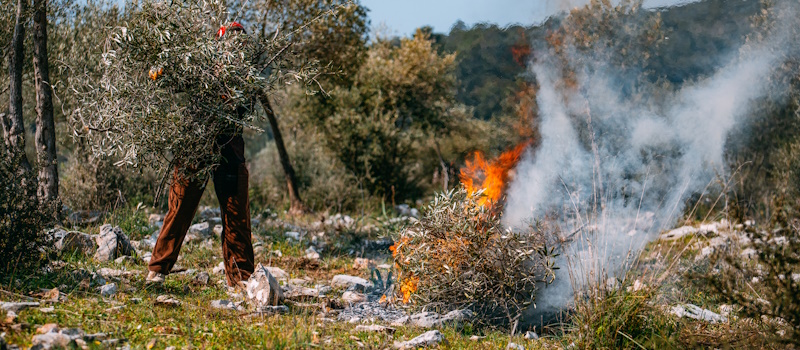How to Prepare For a Wildfire: Evacuation Plans and More
How to Prepare For a Wildfire: Evacuation Plans and More

How to Prepare For a Wildfire: Evacuation Plans and More
According to the National Interagency Fire Center, more than 30,000 wildfire incidents nationwide in 2023 alone. Dry conditions, lightning, and even human-related events (like unsupervised campfires) can spark wildfires that cause thousands of acres of damage.
If you live in an area prone to the effects of wildfires, knowing how to prepare for this type of disaster is critical.
Stay Informed of Changing Conditions
First, make sure you plan to stay up to date on the latest weather and wildfire news. Plenty of reputable sources provide maps of active fires throughout the United States, as well as fire watches and warnings. The National Oceanic and Atmospheric Administration (NOAA) hazard map is an excellent source for tracking nearby fires. Still, you should also make sure your phone is set up to receive emergency notifications and keep an eye on your local news stations.
Create an Emergency Plan
Having an emergency plan that includes evacuation procedures helps you act quickly and keeps everybody in your household on the same page. Start by understanding the evacuation routes available in your area; ideally, you'll want to have more than one way to get out of your neighborhood in the event of an evacuation. Take time to practice your emergency plan with everybody in your household. It would be best to have a "go-bag" packed with essentials you can quickly grab and take.
If an evacuation isn't ordered, but there are still wildfires nearby, plan to have a dedicated room in your home to seal off from outside air as much as possible. Set up an air cleaner or filtration device in this room to mitigate the effects of poor air quality.
Stock Up on the Right Supplies
In addition to a "go-bag" for evacuations, you'll also want to set up an emergency kit for waiting out a wildfire at home. Respirators (such as N95 masks) can help to filter out smoke particles—though the CDC only recommends these for children ages two and older.
Other supplies to consider keeping on-hand include:
- Chargers and additional batteries for cell phones, radios, and other communication devices.
- A supply of any necessary medications.
- Two weeks' worth of water, non-perishable food, and other essentials.
Protect Your Home and Property
Safety and well-being should always be the top priority when preparing for a wildfire. However, if you have time and if you can safely do so, there are some measures you can take to protect your home from damage. The Federal Emergency Management Agency (FEMA) recommends removing flammable vegetation and other combustible materials within a 30-foot radius of your home to reduce the risk of ignition.
Preparing for the possibility of nearby wildfires can be stressful, but a little foresight and planning can make all the difference. Are you looking for more ways to protect your property from a wildfire? Find a local agent to review your insurance coverage today.
